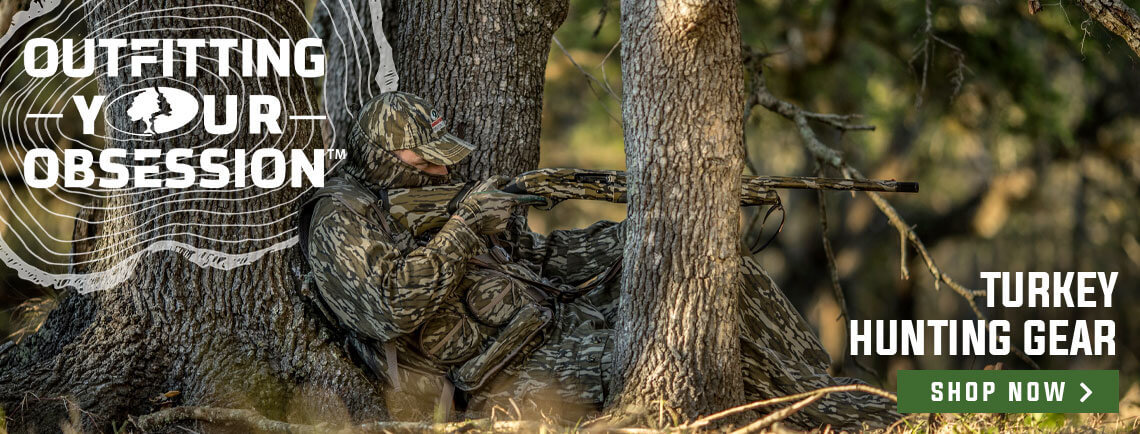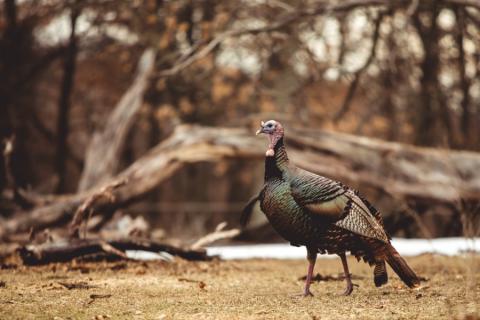Heath Wood
After a good friend had a successful opening day of the Missouri spring turkey season, he invited me to hunt his property where he had taken his gobbler. He informed me that several toms were gobbling the day before and that the chances of calling another gobbler in were likely.

After the toms had flown in a different direction when flying off the roost, my friend and I circled the property and found a tom with four hens in the middle of a wide-open hayfield. We remained unseen by the hens and the strutting tom due to the landscape between them and our location. When we arrived at the field, we got into position on the edge of a fence line.
After close to an hour of calling to the gobbler, my friend whispered to me that he thought I should belly crawl through the field, then when I neared the hill's peak, I should raise and try to make the shot. My friend stood upright behind me for 20 minutes to see what the strutting tom and hens were up to that was causing the delay. He explained that every time the gobbler broke to come to my calling, the other hens would get in front and push him back over the hill to keep him for themselves.
I crawled through the dew-covered grass for the next ten minutes, trying to get closer to the strutting tom. Arriving soaked, I was at the crest of the hill with the turkeys on the opposite side. After looking back at my friend, he gave me a nod to say everything was good to raise and make the shot. When I raised myself to my knees, I could see the tom strutting among the four hens. He immediately went out of the strut, throwing his head up in response to my sight. I took the shot, and the gobbler began to fly, only to go a few feet before tumbling back down to the ground. Leaving my gun lying on the ground, I ran after the gobbler before he tried to fly away again. Thankfully, I recovered my biggest gobbler: a 25-pound heavyweight with an 11-inch beard and an inch and one-eighth spurs.
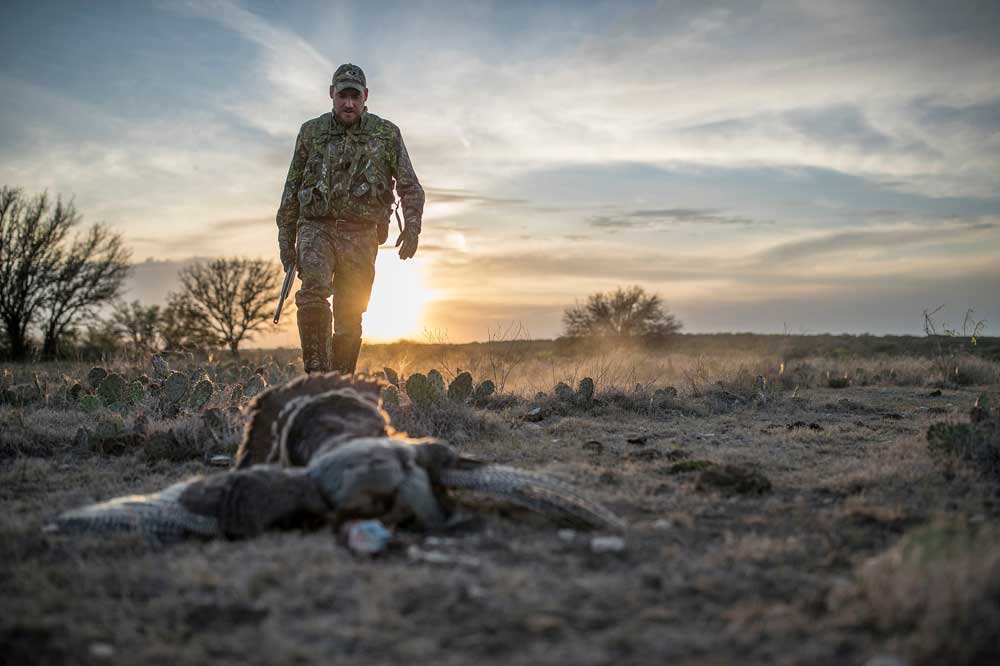
Open Field Turkeys
Hunting turkeys in open fields has its pros and cons. On my hunt, having access to an open field allowed me to find a strut zone, find the tom, then crawl out and make the shot. That was the pro. However, the con was not having the opportunity to move any closer without crawling through the wet grass. As the years go on, crawling gets harder and harder on my body. The other con was after I rose from the ground to make the shot, I had misjudged my distance before shooting. I thought the tom was about 45 yards, and it ended up being closer to 58 to 60 yards. It almost cost me the gobbler entirely, or in the worst-case scenario, I could have injured the tom and not recovered him.
While hunting open fields, using decoys can be the ideal tactic. When turkeys are in open areas, they constantly watch their surroundings; thus, calling turkeys into shooting range and getting them to come close can be challenging if they do not see anything. I prefer using at least three decoys when hunting open areas. An extra decoy gives a more prominent visual from longer distances to grab a turkey's attention.
Using the right turkey calls can also help pull turkeys into the shooting range. High pitched calls such as a box call like the H.S. Strut Butski Long Stroker box call is excellent for long-distance calling, such as hunting in open areas. With a loud call and turkey decoys, turkeys will be drawn in from much farther.
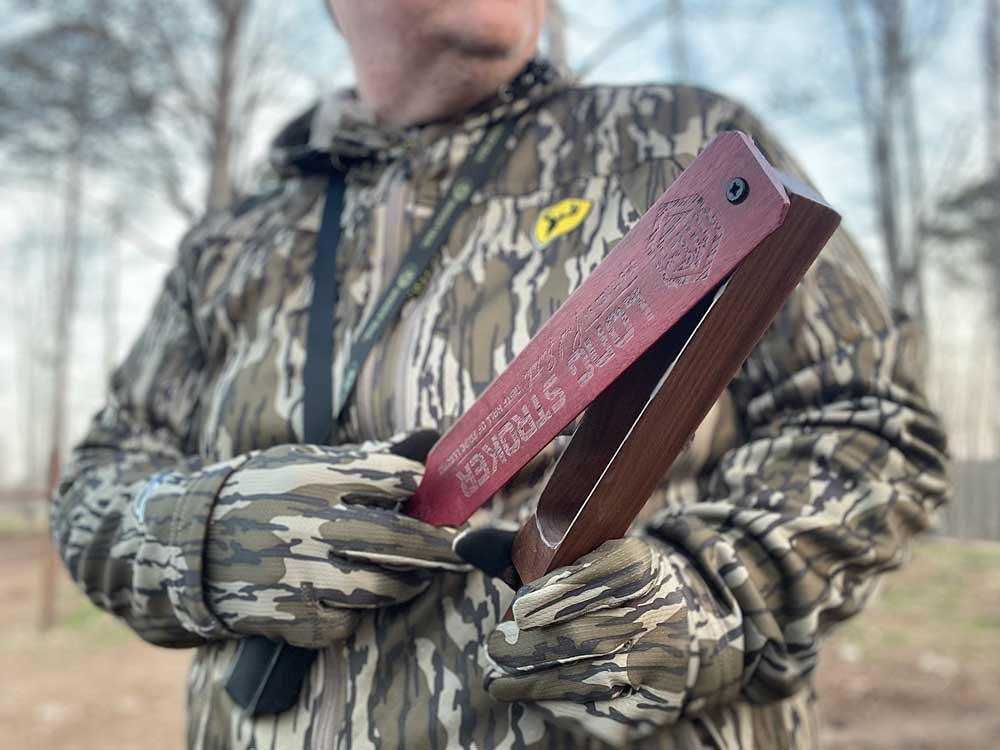
Another advantage of hunting open areas is using a ground blind. When hunters find an open area that gobblers use as a strut zone, they can set up a ground blind before hunting and sit and wait for the toms to show up. Often, gobblers will travel to an open area used as a strut zone during the mid-mornings or afternoons, making a ground blind the perfect option to sit and wait.
Timber Turkeys
As with open field areas, heavy timber areas also have pros and cons when spring turkey hunting. Natural landscape can play tricks on a hunter; this happened to me when I hunted in a big timber area.
When hunting near a river bottom with hundreds of acres of timber on both sides, I found a tom gobbling his head off late morning. After using a locator call to get an exact location of the tom, I neared the edge of a ridge that led into the river bottom. The gobbler sounded like he was just over the peak, so I set up next to a large oak tree and began calling. Each time the tom answered, he sounded like he was getting ready to crest the hill.
Unfortunately, after a long period of the tom refusing to come closer, I decided to move in nearer to the river bottom, look over, and see if I could catch sight of the tom. As I looked off into the bottom, the tom gobbled once more. He was two hundred yards as the crow flew over the next ridge. Yet, back 50 yards up the hill in the timber, the toms gobbling sounded as if he was in close range. The timber and the landscape threw the sound off so much that it completely fooled me.
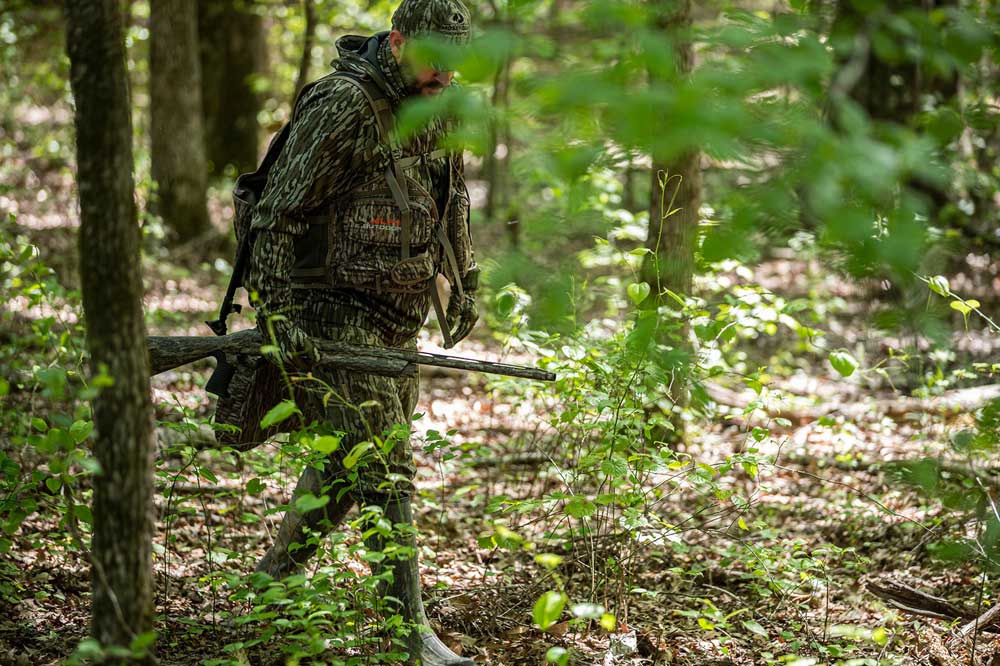
Even though the echoing sounds that can bounce off the timber can be fooling, hunting turkeys in timber areas can also give the hunter an advantage. Significant timber areas near creeks or rivers are often great roosting for turkeys. Roosting areas are precisely what the hunter looks for when beginning the hunt each morning. Locating toms the night before, then easing back into the area early the following day gives the hunter the benefit of soft calling a tom into shooting range faster.
Heavy timber areas are also an excellent spot to run and gun during the mid-mornings if the early mornings don't work out. When the newly grown green leaves are out on the trees, a hunter has the significant cover to ease their way into a closer range of a gobbling tom before setting up to call. Using a crow call or other locator call is a great way to find a lone tom in the timber and then ease in closer by using the timber as cover. Once the hunter is close, they can set up and begin using a call to lure the gobbler into range. The thundering sound of a tom gobbling in the timber is a sound like no other. The ground vibrates when a tom gobbles at close range in many cases.
In conclusion, which is best to hunt gobblers - open areas or timber? There is no set answer - they both have their advantages when properly hunted. The hunter can succeed in both areas by keeping a proper game plan for both scenarios.

